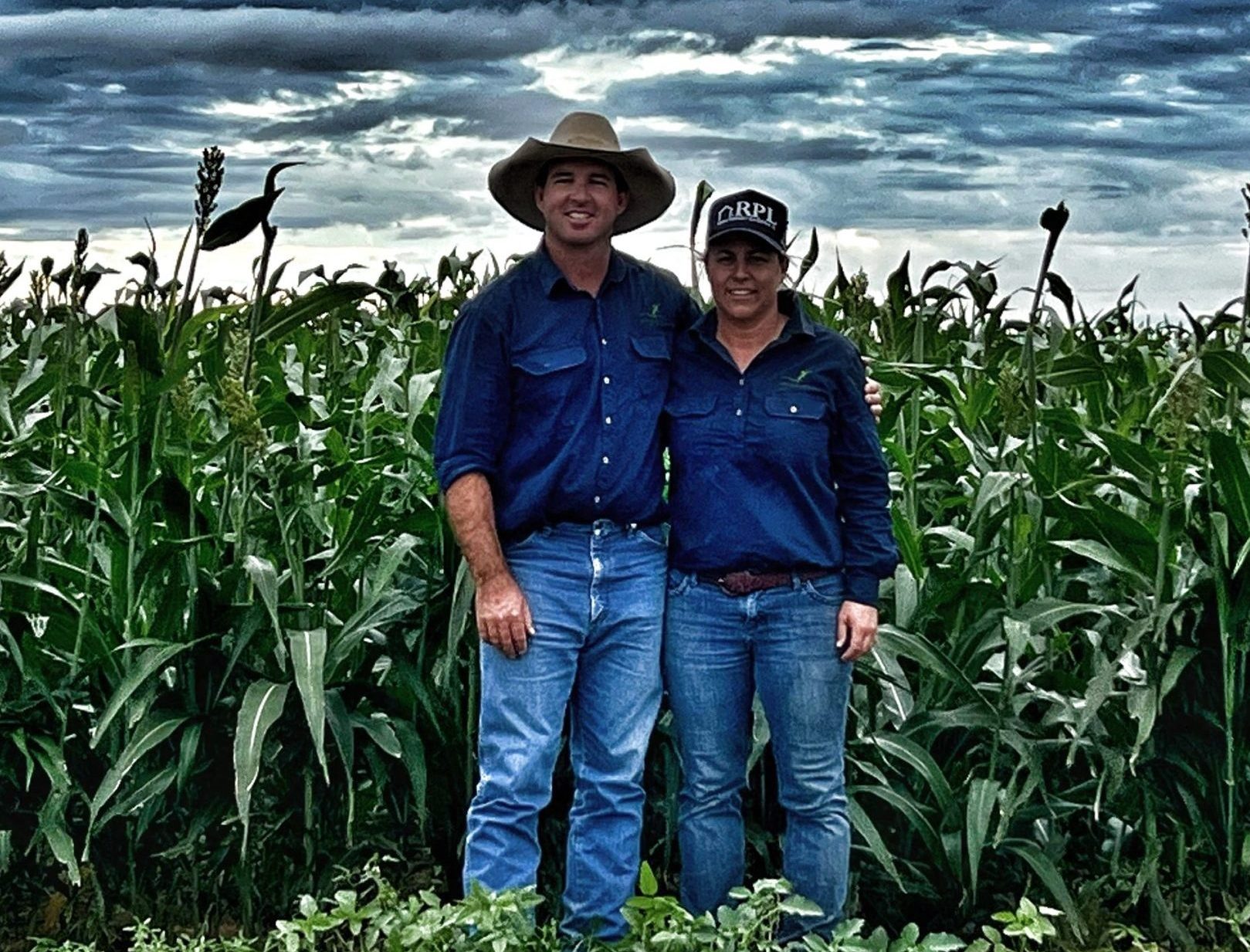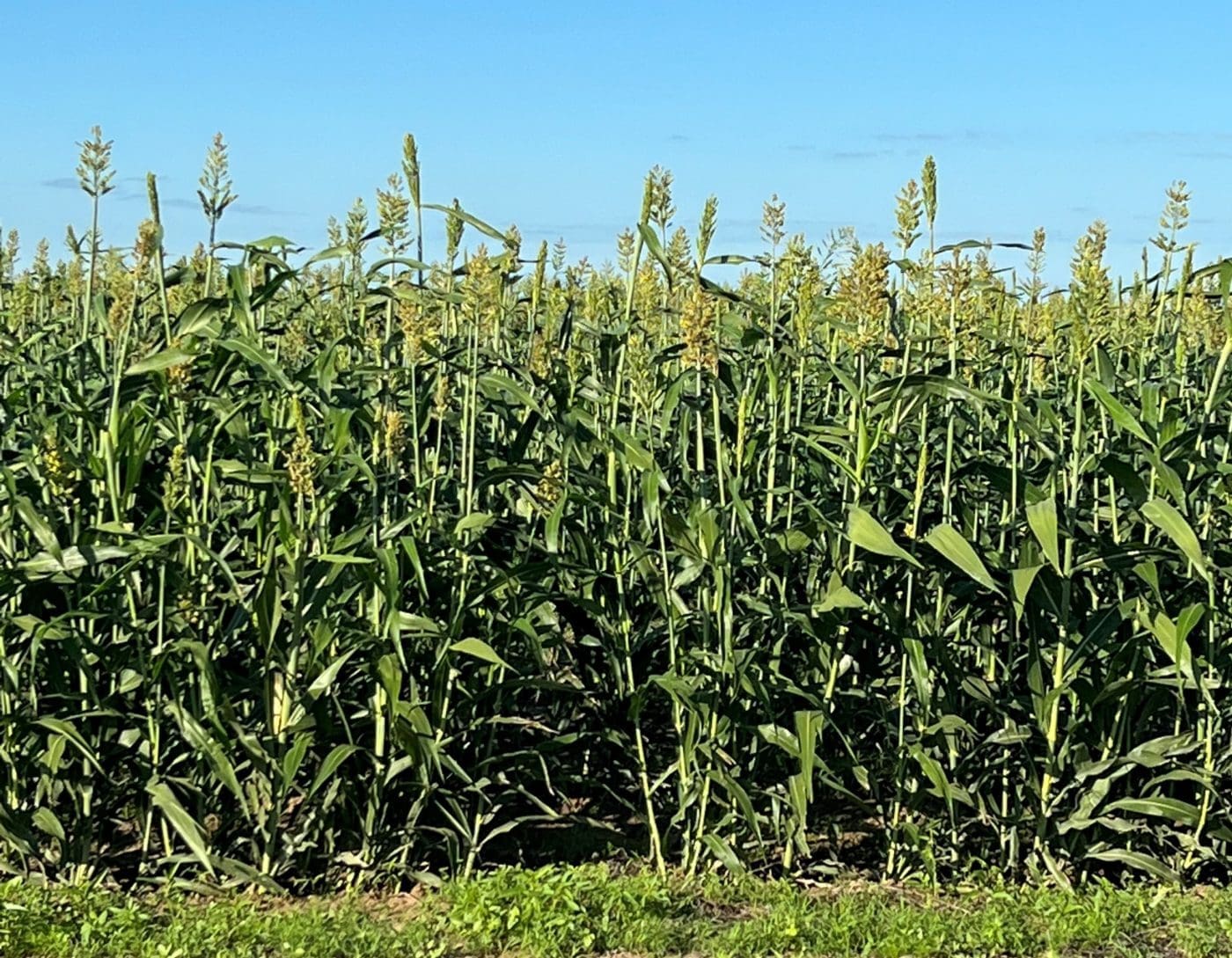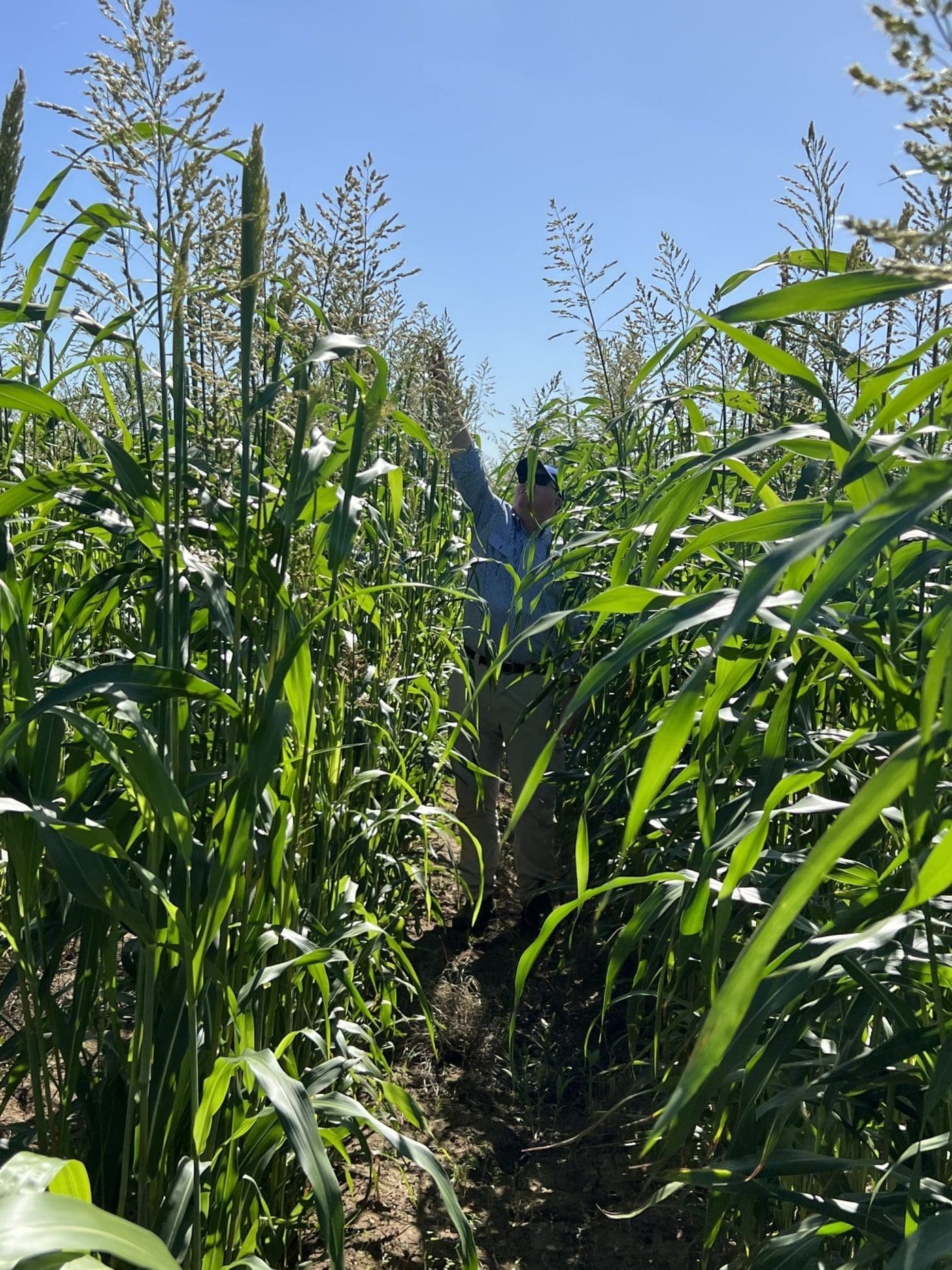WHILE Western Queensland is known for its wide-open downs country covered in native Mitchell and Flinders grass, some producers have been looking to boost productivity with the addition of fodder crops like sorghum and, in some cases, oats.
The semi-arid area had a dry decade up until the past two years, which have seen widespread rain and provided an opportunity trial fodder crops.
Boyd Webb, from Weewondilla Station north of Longreach, was one of them. He last year planted an oats crop – which is rare for the Longreach area.
“We always had forage sorghum in mind, but with a good forecast last winter we decided to plant oats, we were lucky it kept raining and it ended up being successful,” Mr Webb said.
“We only planted about 120ha (300 acres) of oats, which we baled and sold as hay.
“We haven’t been putting in any large areas, it is about finding those claypan areas that don’t grow a lot of feed and making them more productive.”
“We think we can get enough area for what we want to do without being detrimental to our grass country. The whole reason for this is to protect our country and ensure that it remains in good health.”
Mr Webb followed the oats crop with a 200ha (500 acres) summer sorghum crop in the same area – which he has recently finished cutting as silage. He said the returns from the sorghum were exciting.
“We only harvested about 120ha of sorghum because that was all that was mature enough,” he said.
“Even the crop we cut was short one good rain event and we cut it because we ran out of moisture. I was aware that we probably didn’t have enough moisture to plant, but I was keen to try and was still happy with the result. We gradually kept putting more crop in and we found the early plant was the best this year.
“If you look at what is possible and run some basic numbers on it, it looks interesting. There will be years that you get nothing much, but those years will also be drought years, so the question then becomes did you grow more feed than grass?”
The drought management strategy
Drought management is a big motivation for the Webb’s cropping venture, with the area prone to many years long dry periods.
Mr Webb said he had about 1000T of silage in a pit for the next drought, with the goal of having 20,000T in the reserve.
“We are still learning and have a long way to go to get to this goal but if you don’t try you will never get there.
“With the right couple of years and being ready I can easily see us growing 8000T in the year. Yes, there is a cost to that but silage has come a long way and varieties keep improving and I think that will help balance the cost.”
There is a cost for not operating
Mr Webb said the silage was made on site with the aim of servicing the bulk needed for drought feeding – meaning he only needed to buy in more specialised products.
“The beauty about silage is you can put it in a pit, and it will stay the same quality for years,” he said.
“Even if it is not the highest quality product, we think it will cost about a fifth of the cost of buying in feed during the drought.”
Mr Webb said having silage in reserve gave them an opportunity to bring stock into a more confined area when it gets dry, which was easier on the native pasture.
“We have at least two really ordinary years every 10 years and I would like to put enough feed away every four years and bring sheep or cattle into pens to feed them,” he said.
“It’s a very good insurance policy because you can get the stock off the paddock early, you are not driving a tractor or a truck out into the paddock to feed cottonseed – you can run it more efficiently closer to home and have more options.
“There is a lot of potential for people to get drought ready, I don’t think it will be easy but I think it will become part of a lot of businesses out here. With the price of land and the cost of production, not many can afford to draw down the blinds when it gets dry and shut the cheque book.
“There is a cost for not operating and to be able to keep core numbers and turn off constant sounds appealing to me.”
Increasing carrying capacity
Further north in the Winton area, Corfield Downs manager Scott Holcombe has been growing forage sorghum to increase the carrying capacity of the property.
Mr Holcombe moved to the area with his wife Penny in 2014, with both coming from cropping backgrounds in Goondiwindi and Narrabri respectively. They were inspired to try growing sorghum after looking at crops further north.
“It has really changed the dynamics of how we operate here,” Mr Holcombe said.
“We put all our cattle on sorghum at this time of the year when the flinders grass hays off and we haven’t had to use any lick since we have been doing that – the performance is so much better. We have increased our stocking numbers by 25pc.”
Corfield Downs has about a 4000ha cropping area, with a third of it always in fallow. It is mostly planted on ashy soils, where there is roly poly – with the prime Mitchell Grass area untouched.
Mr Holcombe said keeping areas in fallow helped manage the variable conditions.
“Our average rainfall out here is about 400mm (16 inch) and that falls over about a three-month period, which is quite a bit of rain for that period of time,” he said.
“But because we have that country in fallow and even if you get 75-100mm of rain, you will still grow a decent sorghum crop. We don’t have really have any frosts here so you can keep a sorghum crop for years if you want.”
Major crop growing potential
Mr Holcombe said the cropping operation on Corfield Downs was garnering plenty of interest and the station had plenty of interest.
“You have forage sorghum three-metres-high, you can’t even walk into it and there is 1000ha paddock of it, which is mind boggling,” he said.
“It is very cost effective, but the big thing is that you need to spray and you need to stick to your planting window. Once you have rain, you really only have that week for sowing and you need to be going around the clock to do it.”
While Mr Holcombe said the station’s strategy was about increasing productivity – there was major potential with drought management.
“Silage is a big one when it comes to drought management,” he said.
“But there is a lot of other options, there’s no reason you can’t grow grain sorghum, put silos in and there is a big grain supply for yourself.”



